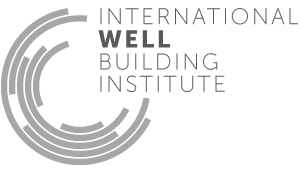Workplace family support
- 83 Radiant thermal comfort
- 84 Health and wellness awareness
- 85 Integrative design
- 86 Post-occupancy surveys
- 87 Beauty and design I
- 88 Biophilia I - qualitative
- 89 Adaptable spaces
- 90 Healthy sleep policy
- 91 Business travel
- 92 Building health policy
- 93 Workplace family support
- 94 Self-monitoring
- 95 Stress and addiction treatment
- 96 Altruism
- 97 Material transparency
- 98 JUST organization
- 99 Beauty and design II
- 100 Biophilia II - quantitative
- 101 Innovation feature I
- 204 Impact reducing flooring
- 205 Health through housing equity
93. Workplace family support
Work-life balance can often be overlooked and employees' personal lives can lose priority to their work responsibilities. Policies regarding family care ensure that workers are able to take the necessary time off for self-care, while having the peace of mind that their loved ones are receiving proper care as well.
This feature provides support to improve work-life balance.
Employers provide the following:
At least one of the following requirements are met:
Employers provide at least one of the following:

Applicability Matrix
| Core & Shell | Tenant Improvement | New Construction | |
|---|---|---|---|
| Part 1: Parental Leave | - | O | O |
| Part 1: Unit Allocation | - | - | - |
| Part 2: Employer Supported Child Care | - | O | O |
| Commercial Kitchen | Schools | Multifamily Residential | Restaurant | Retail | |
|---|---|---|---|---|---|
| Part 1: Parental Leave | - | O | - | O | O |
| Part 1: Unit Allocation | - | - | O | - | - |
| Part 2: Employer Supported Child Care | - | O | - | O | O |
Verification Methods Matrix
| Letters of Assurance | Annotated Documents | On-Site Checks | |
|---|---|---|---|
|
PART 1 (Protocol) Parental Leave |
Policy Document | ||
|
PART 1 (Design) Unit Allocation |
Policy Document | ||
|
PART 2 (Protocol) Employer Supported Child Care |
Policy Document |
| 93.1.b |
US federal law entitles eligible employees to up to 12 workweeks of leave during any 12-month period for reasons listed in § 2612(a)(1), including the birth of a child, or placement of a child with the employee for adoption or foster care. |
| 93.3.a |
United States federal law permits eligible employees to receive up to 12 workweeks of leave during any 12-month period for an employee to care for a spouse, child or parent with a serious health condition. |
| 93.3.b |
The National Partnership for Women and Families' Expecting Better recognizes US states that allow workers to use their earned paid sick days to care for either a new child or an ill family member. |
| 93.3.c |
The National Partnership for Women and Families' "Expecting Better" recognizes US states that improve upon federal law by "providing all nursing mothers with reasonable break times and/or a place other than a bathroom to express breast milk at work." |
| 93.2.a |
Sloan Work and Family Research Network's "Why is Employer-Supported Child Care an Important Business Issue" states that on-site childcare centers increase loyalty to an organization and reduce commuting time for employees. |
| 93.2.b |
Sloan Work and Family Research Network's "Why is Employer-Supported Child Care an Important Business Issue" notes that subsidies and vouchers provide tax credits for employers and lower employees' personal financial expenses. |
| 93.1.a |
A 2015 Presidential Memorandum from the White House directs federal agencies to ensure employee policies offering 240 hours (equivalent to 6 workweeks) of advanced (i.e., paid) sick leave for appropriate uses, including the birth or adoption of a child. |
